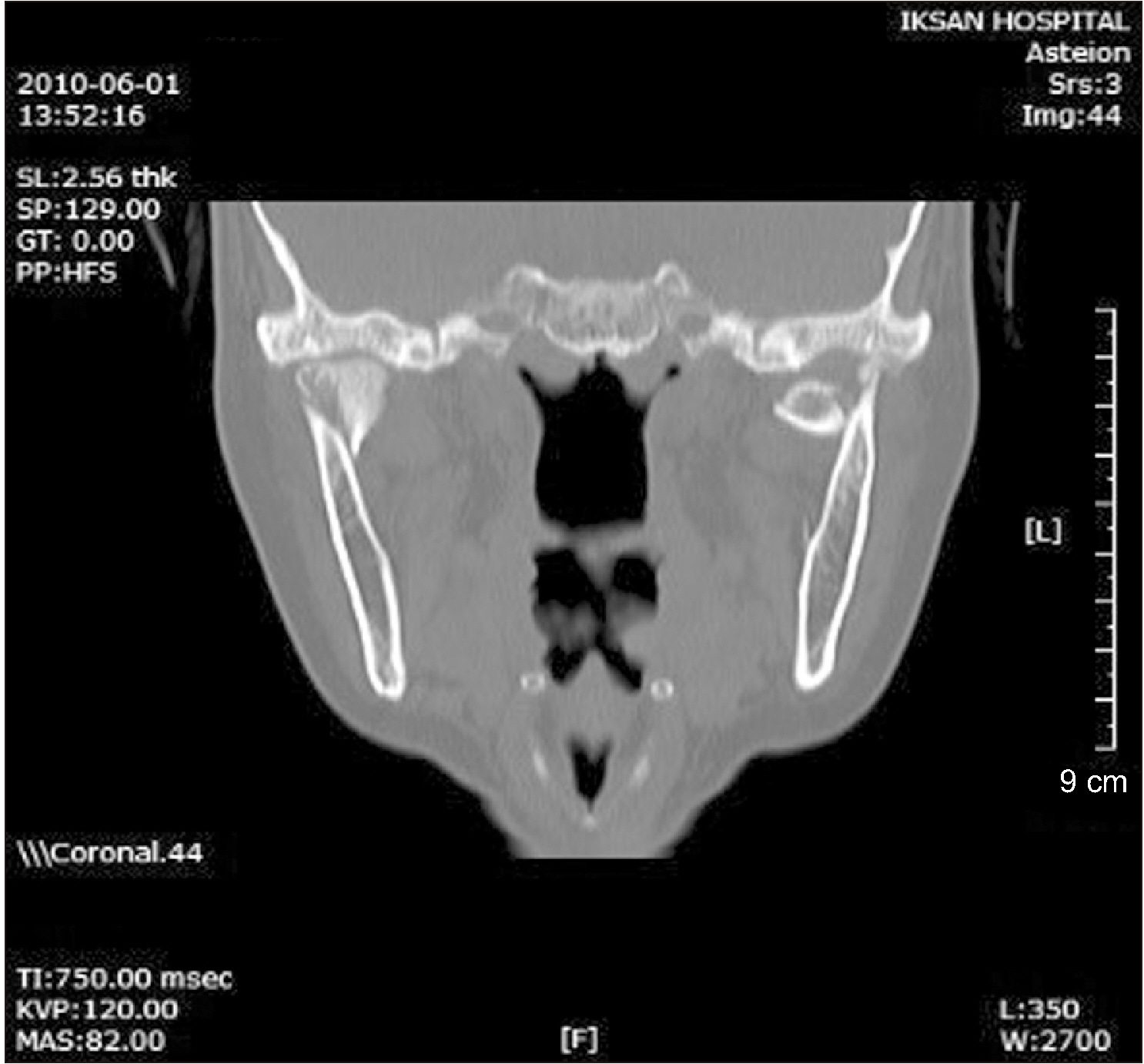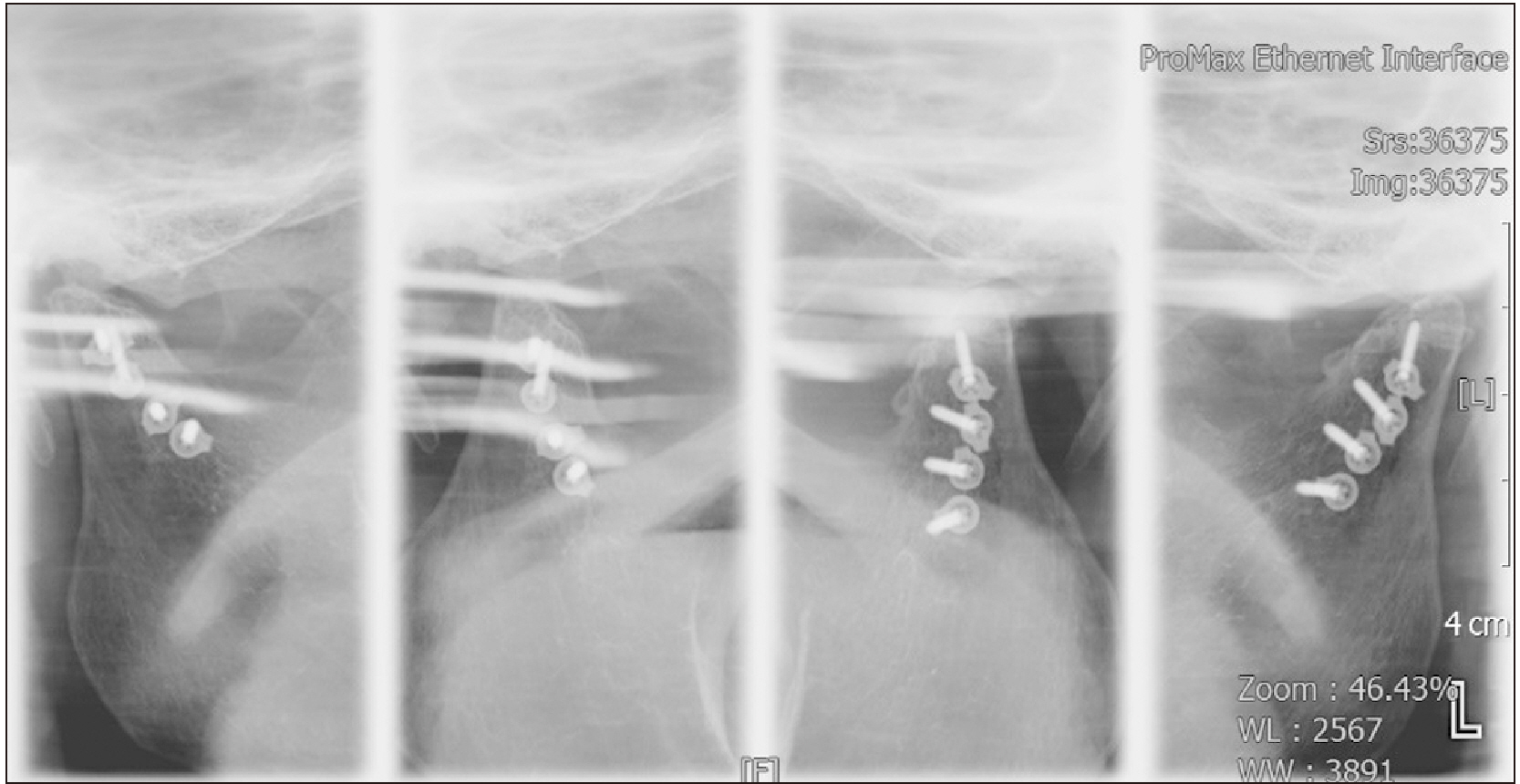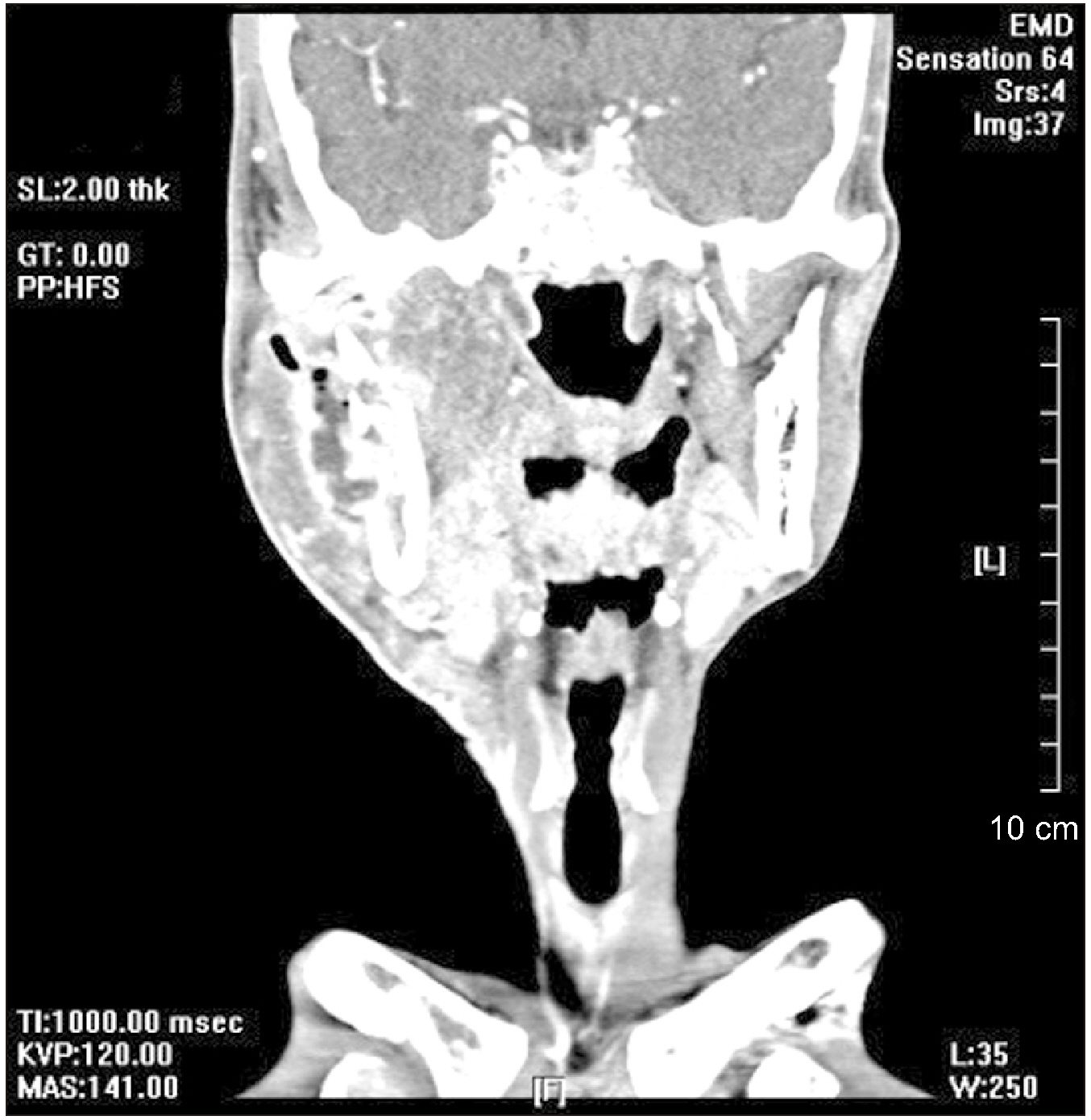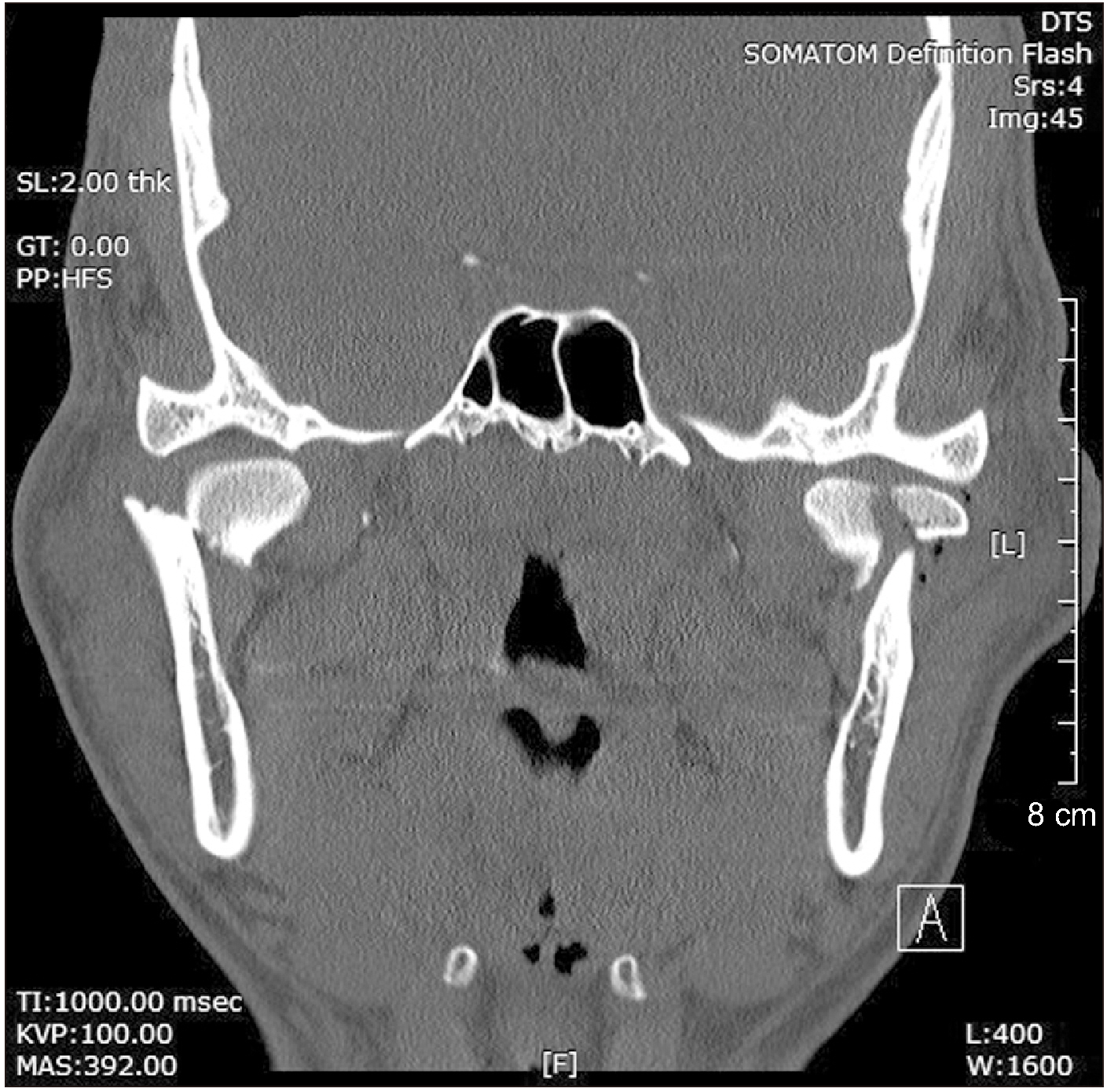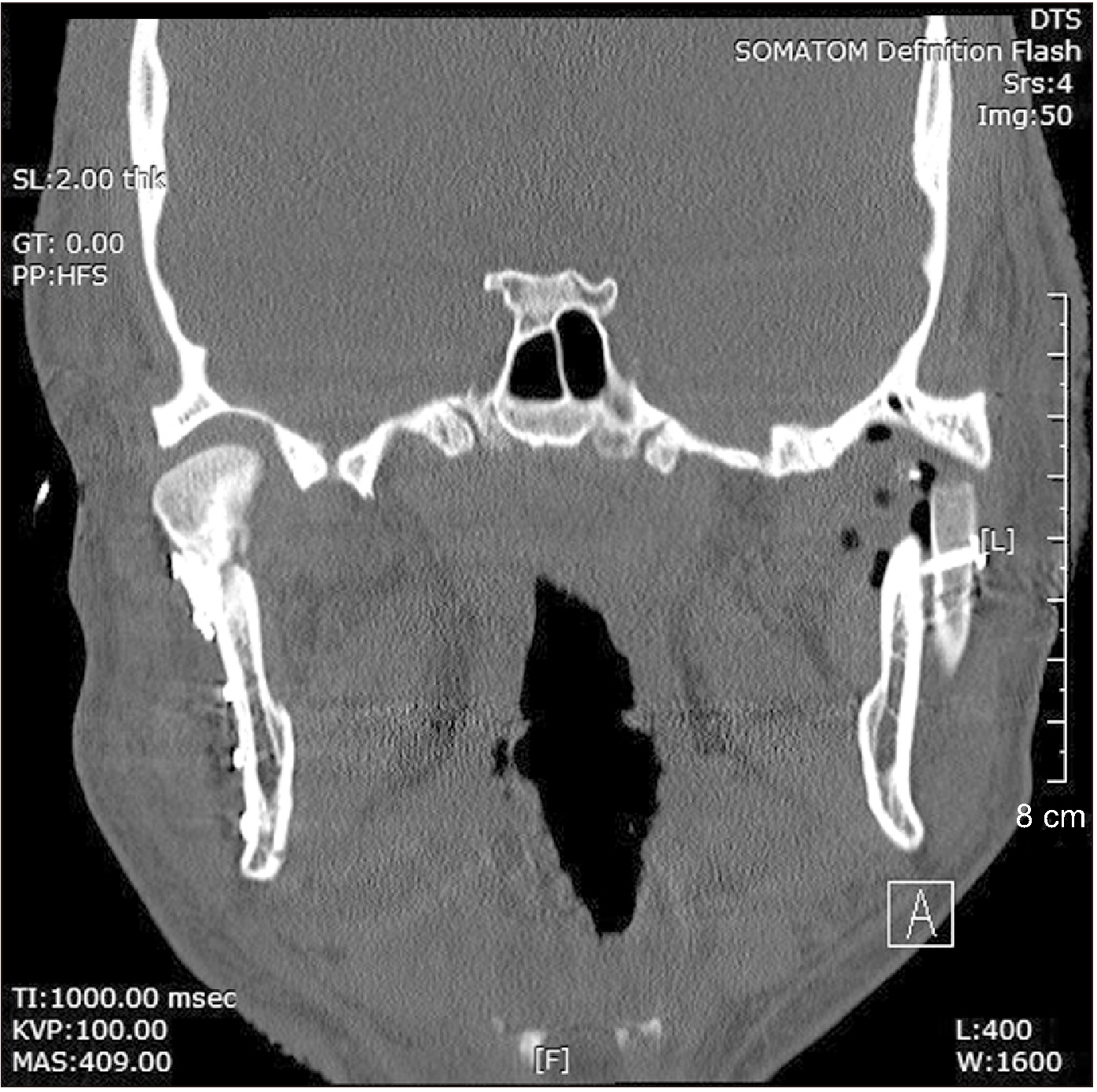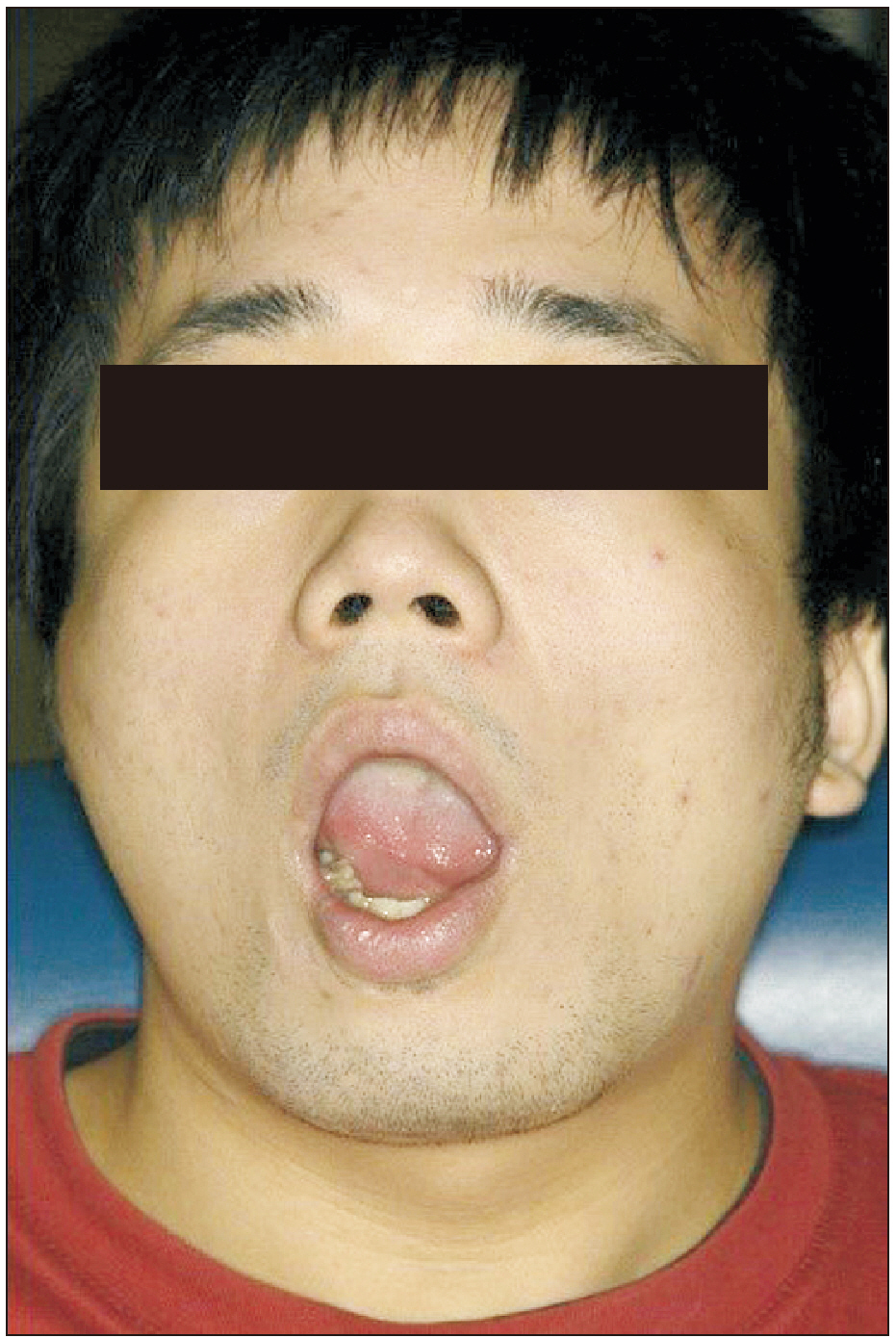J Korean Assoc Oral Maxillofac Surg.
2021 Apr;47(2):128-134. 10.5125/jkaoms.2021.47.2.128.
Temporomandibular joint reconstruction with costochondral graft: case series study
- Affiliations
-
- 1Department of Oral and Maxillofacial Surgery, College of Dentistry, Wonkwang University, Iksan, Korea
- KMID: 2515311
- DOI: http://doi.org/10.5125/jkaoms.2021.47.2.128
Abstract
- Various techniques have been used to reconstruct the temporomandibular joints, including autogenous transplants and alloplastic implants. Among autogenous grafts, costochondral grafts have mainly been used. A costochondral graft has many advantages over other autogenous grafts and alloplastic implants. Harvest is easy and has minimal impact on patients. The graft can bear functional load well and biocompatibility is excellent. A costochondral graft obviates foreign body reactions and further surgery for revision of alloplastic replacements if the graft takes well. Although long-term prognosis remains unclear, it appears that for autogenous condylar reconstruction, costochondral grafts can be used with few complications and acceptable results. This article describes cases and discusses surgical techniques and considerations related to costochondral grafts.
Figure
Reference
-
References
1. Saeed N, Hensher R, McLeod N, Kent J. 2002; Reconstruction of the temporomandibular joint autogenous compared with alloplastic. Br J Oral Maxillofac Surg. 40:296–9. https://doi.org/10.1016/s0266-4356(02)00139-0 . DOI: 10.1016/s0266-4356(02)00139-0. PMID: 12175828.
Article2. Khadka A, Hu J. 2012; Autogenous grafts for condylar reconstruction in treatment of TMJ ankylosis: current concepts and considerations for the future. Int J Oral Maxillofac Surg. 41:94–102. https://doi.org/10.1016/j.ijom.2011.10.018 . DOI: 10.1016/j.ijom.2011.10.018. PMID: 22088390.
Article3. Mohan MC, Prasad BR, Bhat S, Bhat SS. 2014; Reconstruction of condyle following surgical correction of temporomandibular joint ankylosis: current concepts and considerations for the future. NUJHS. 4:39–46.4. Quinn PD. 1998. Color atlas of temporomandibular joint surgery. Mosby;Louis:5. Bayat M, Badri A, Moharamnejad N. 2009; Treatment of temporomandibular joint ankylosis: gap and interpositional arthroplasty with temporalis muscle flap. Oral Maxillofac Surg. 13:207–12. https://doi.org/10.1007/s10006-009-0174-4 . DOI: 10.1007/s10006-009-0174-4. PMID: 19806372.
Article6. Jang HW, Kim NK, Lee WS, Kim HJ, Cha IH, Nam W. 2014; Mandibular condyle and infratemporal fossa reconstruction using vascularized costochondral and calvarial bone grafts. J Korean Assoc Oral Maxillofac Surg. 40:83–6. https://doi.org/10.5125/jkaoms.2014.40.2.83 . DOI: 10.5125/jkaoms.2014.40.2.83. PMID: 24868505. PMCID: PMC4028791.
Article7. Fernandes R, Fattahi T, Steinberg B. 2006; Costochondral rib grafts in mandibular reconstruction. Atlas Oral Maxillofac Surg Clin North Am. 14:179–83. https://doi.org/10.1016/j.cxom.2006.05.007 . DOI: 10.1016/j.cxom.2006.05.007. PMID: 16959605.
Article8. Chen CT, Lai JP, Chen YR. 1997; Costochondral graft in acute mandibular condylar fracture. Plast Reconstr Surg. 100:1234–9. https://doi.org/10.1097/00006534-199710000-00024 . DOI: 10.1097/00006534-199710000-00024. PMID: 9326785.
Article9. Mosby EL, Hiatt WR. 1989; A technique of fixation of costochondral grafts for reconstruction of the temporomandibular joint. J Oral Maxillofac Surg. 47:209–11. https://doi.org/10.1016/s0278-2391(89)80122-3 . DOI: 10.1016/s0278-2391(89)80122-3. PMID: 2913260.
Article10. Shetty KP, Mehta R, Mokal N. 2000; An innovative technique for fixing costochondral grafts. Plast Reconstr Surg. 106:1658–9. https://doi.org/10.1097/00006534-200012000-00048 . DOI: 10.1097/00006534-200012000-00048. PMID: 11129205.
Article11. Kaban LB, Troulis MJ. 2004. Pediatric oral and maxillofacial surgery. W.B. Saunders;Philadelphia: p. 351.12. Matukas VJ, Szymela VF, Schmidt JF. 1980; Surgical treatment of bony ankylosis in a child using a composite cartilage-bone iliac crest graft. J Oral Surg. 38:903–5. PMID: 7003077.13. Kummoona R. 1986; Chondro-osseous iliac crest graft for one stage reconstruction of the ankylosed TMJ in children. J Maxillofac Surg. 14:215–20. https://doi.org/10.1016/s0301-0503(86)80292-2 . DOI: 10.1016/s0301-0503(86)80292-2. PMID: 3525723.
Article
- Full Text Links
- Actions
-
Cited
- CITED
-
- Close
- Share
- Similar articles
-
- TEMPOROMANDIBULAR JOINT RECONSTRUCTION USING COSTOCHONDRAL GRAFT: CASE REPORTS
- Comparison of Costochondral Graft and Customized Total Joint Reconstruction for Treatments of Temporomandibular Joint Replacement
- Mandibular condyle and infratemporal fossa reconstruction using vascularized costochondral and calvarial bone grafts
- Autogenous auricular cartilage graft for repair of temporomandibular joint disk
- Immediate reconstruction using vertical ramus osteotomy and bone slidng after condylectomy due to osteochondroma: a case report

